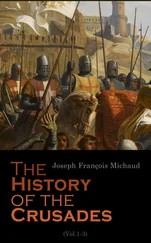The furniture consists of a few mats, several baskets, a milk-pail, a number of earthen pots, a bundle of assagais, and a few other weapons of war. Next, to guard against the perils of the rainy season, a ditch about two feet in width and of equal depth is made about the new dwelling. Now multiply this hut by five hundred, preserving the circle, and you have the village. The palaver-house , or place for public debates, is situated in the centre of the circle of huts. Among the northern and southern tribes, a fence is built around their villages, when they are called "kraals." The space immediately outside of the fence is cleared, so as to put an enemy at a disadvantage in an attack upon the village. Among the agricultural tribes, as, for example, the Kaffirs, they drive their cattle into the kraal, and for the young build pens.
The other method of building villages is to have one long street, with a row of houses on each side, rectangular in shape. They are about twenty-five or thirty feet in length, and about twelve to fifteen feet in width. Six or eight posts are used to join the material of the sides to. The roofs are flat. Three rooms are allowed to each house. The two end rooms are larger than the centre one, where the door opens out into the street. Sometimes these rooms are plastered, but it is seldom; and then it is in the case of the well-to-do class. 72
We said, at the beginning of this chapter, that the government in Africa was largely patriarchal; and yet we have called attention to four great kingdoms. There is no contradiction here, although there may seem to be; for even kings are chosen by ballot, and a sort of a house of lords has a veto power over royal edicts.
"Among the tribes which I visited in my explorations I found but one form of government, which may be called the patriarchal. There is not sufficient national unity in any of the tribes to give occasion for such a despotism as prevails in Dahomey, and in other of the African nationalities. I found the tribes of equatorial Africa greatly dispersed, and, in general, no bond of union between parts of the same tribe. A tribe is divided up into numerous clans , and these again into numberless little villages, each of which last possesses an independent chief. The villages are scattered; are often moved for death or witchcraft, as I have already explained in the narrative; and not infrequently are engaged in war with each other.
"The chieftainship is, to a certain extent, hereditary, the right of succession vesting in the brother of the reigning chief or king. The people, however, and particularly the elders of the village, have a veto power, and can, for sufficient cause, deprive the lineal heir of his succession, and put in over him some one thought of more worth. In such cases the question is put to the vote of the village; and, where parties are equally divided as to strength, there ensue sometimes long and serious palavers before all can unite in a choice. The chief is mostly a man of great influence prior to his accession, and generally an old man when he gains power.
"His authority, though greater than one would think, judging from the little personal deference paid to him, is final only in matters of every-day use. In cases of importance, such as war, or any important removal, the elders of the village meet together and deliberate in the presence of the whole population, which last finally decide the question.
"The elders, who possess other authority, and are always in the counsels of the chief, are the oldest members of important families in the village. Respect is paid to them on account of their years, but more from a certain regard for 'family,' which the African has very strongly wherever I have known him. These families form the aristocracy." 73
Here are democracy and aristocracy blended somewhat. The king's power seems to be in deciding everyday affairs, while the weighty matters which affect the whole tribe are decided by the elders and the people. Mr. Reade says of such government—
"Among these equatorial tribes the government is patriarchal, which is almost equivalent to saying that there is no government at all. The tribes are divided into clans. Each clan inhabits a separate village, or group of villages; and at the head of each is a patriarch, the parody of a king. They are distinguished from the others by the grass-woven cap which they wear on their heads, and by the staff which they carry in their hands. They are always rich and aged: therefore they are venerated; but, though they can exert influence, they cannot wield power; they can advise, but they cannot command. In some instances, as in that of Quenqueza, King of the Rembo, the title and empty honors of royalty are bestowed upon the most influential patriarch in a district. This is a vestige of higher civilization and of ancient empire which disappears as one descends among the lower tribes." 74
"The African form of government is patriarchal, and, according to the temperament of the chief, despotic, or guided by the counsel of the elders of the tribe. Reverence for loyalty sometimes leads the mass of the people to submit to great cruelty, and even murder, at the hands of a despot or madman; but, on the whole, the rule is mild; and the same remark applies in a degree to their religion." 75
When a new king is elected, he has first to repair to the pontiff's house, who—apropos of priests—is more important than the king himself. The king prostrates himself, and, with loud cries, entreats the favor of this high priest. At first the old man inside, with a gruff voice, orders him away, says he cannot be annoyed; but the king enumerates the presents he has brought him, and finally the door opens, and the priest appears, clad in white, a looking-glass on his breast, and long white feathers in his head. The king is sprinkled, covered with dust, walked over, and then, finally, the priest lies upon him. He has to swear that he will obey, etc.; and then he is allowed to go to the coronation. Then follow days and nights of feasting, and, among some tribes, human sacrifices.
The right of succession is generally kept on the male side of the family. The crown passes from brother to brother, from uncle to nephew, from cousin to cousin. Where there are no brothers, the son takes the sceptre. In all our studies on Africa, we have found only two women reigning. A woman by the name of Shinga ascended the throne of the Congo empire in 1640. She rebelled against the ceremonies, sought to be introduced by Portuguese Catholic priests, who incited her nephew to treason. Defeated in several pitched battles, she fled into the Jaga country, where she was crowned with much success. In 1646 she won her throne again, and concluded an honorable peace with the Portuguese. The other queen was the bloodthirsty Tembandumba of the Jagas. She was of Arab blood, and a cannibal by practice. She fought many battles, achieved great victories, flirted with beautiful young savages, and finally was poisoned.
The African is not altogether without law.
"Justice appears, upon the whole, to be pretty fairly administered among the Makololo. A headman took some beads and a blanket from one of his men who had been with us; the matter was brought before the chief; and he immediately ordered the goods to be restored, and decreed, moreover, that no headman should take the property of the men who had returned. In theory all the goods brought back belonged to the chief; the men laid them at his feet, and made a formal offer of them all: he looked at the articles, and told the men to keep them. This is almost invariably the case. Tuba Mokoro, however, fearing lest Sekeletu might take a fancy to some of his best goods, exhibited only a few of his old and least valuable acquisitions. Masakasa had little to show: he had committed some breach of native law in one of the villages on the way, and paid a heavy fine rather than have the matter brought to the doctor's ears. Each carrier is entitled to a portion of the goods in his bundle, though purchased by the chief's ivory; and they never hesitate to claim their rights; but no wages can be demanded from the chief if he fails to respond to the first application." 76
Читать дальше












